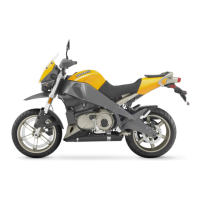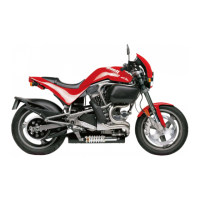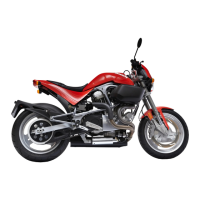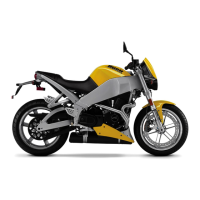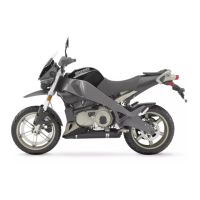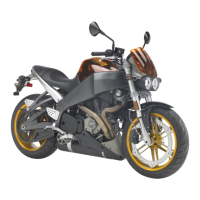2007 Buell Lightning: Drive/Transmission 6-9
HOME
CLUTCH 6.4
GENERAL
The purpose of the clutch is to smoothly disengage and
engage the engine from the rear wheel for starting, stopping
and shifting gears.
See Figure 6-12. The clutch is a wet, multiple-disc clutch with
steel plates and fiber (friction) plates stacked alternately in
the clutch shell. The pack consists of seven fiber plates,
seven steel plates, one narrow fiber plate, one damper spring
and one damper spring seat. The fiber plates (clutch driving
plates) are keyed to the clutch shell, which is driven by the
engine through the primary chain. The steel plates (clutch
driven plates) are keyed to the clutch hub, which drives the
rear wheel through the transmission and secondary drive
belt.
When the clutch is engaged (clutch lever released), the dia-
phragm spring applies strong force against the pressure
plate. The pressure plate then presses the clutch plates
together causing the plates to turn as a single unit. The result
is that the rotational force of the clutch shell is transmitted
through the clutch plates to the clutch hub. As long as the
transmission is set in a forward gear, power from the engine
will be transmitted to the rear wheel.
When the clutch is disengaged (clutch lever pulled to left han-
dlebar grip), the pressure plate is pulled outward (by clutch
cable action) against the diaphragm spring, thereby com-
pressing the diaphragm spring. With the pressure plate
retracted, strong inward force no longer squeezes the clutch
plates together. The fiber plates are now free to rotate at a dif-
ferent relative speed than that of the steel plates (i.e. Slip-
page between the clutch plates occurs). The result is that the
rotational force of the clutch shell is no longer fully transmitted
through the “unlocked” clutch plates to the clutch hub. The
engine is free to rotate at a different speed than the rear
wheel.
Table 6-6. Troubleshooting
SYMPTOM CAUSE (CHECK IN FOLLOWING ORDER) REMEDY
Clutch slips.
Incorrect clutch release adjustment. Check and adjust clutch release mechanism.
Worn clutch plates. Check service wear limits. Replace plates.
Clutch drags.
Incorrect clutch release adjustment. Check and adjust clutch release mechanism.
Worn clutch release ramps or balls. Replace release ramps and/or balls.
Warped clutch steel plates. Replace clutch steel plates.
Blade worn or damaged clutch gear splines. Replace clutch gear or hub as required.
Overfilled primary. Drain lubricant to correct level.
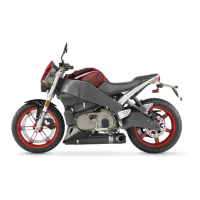
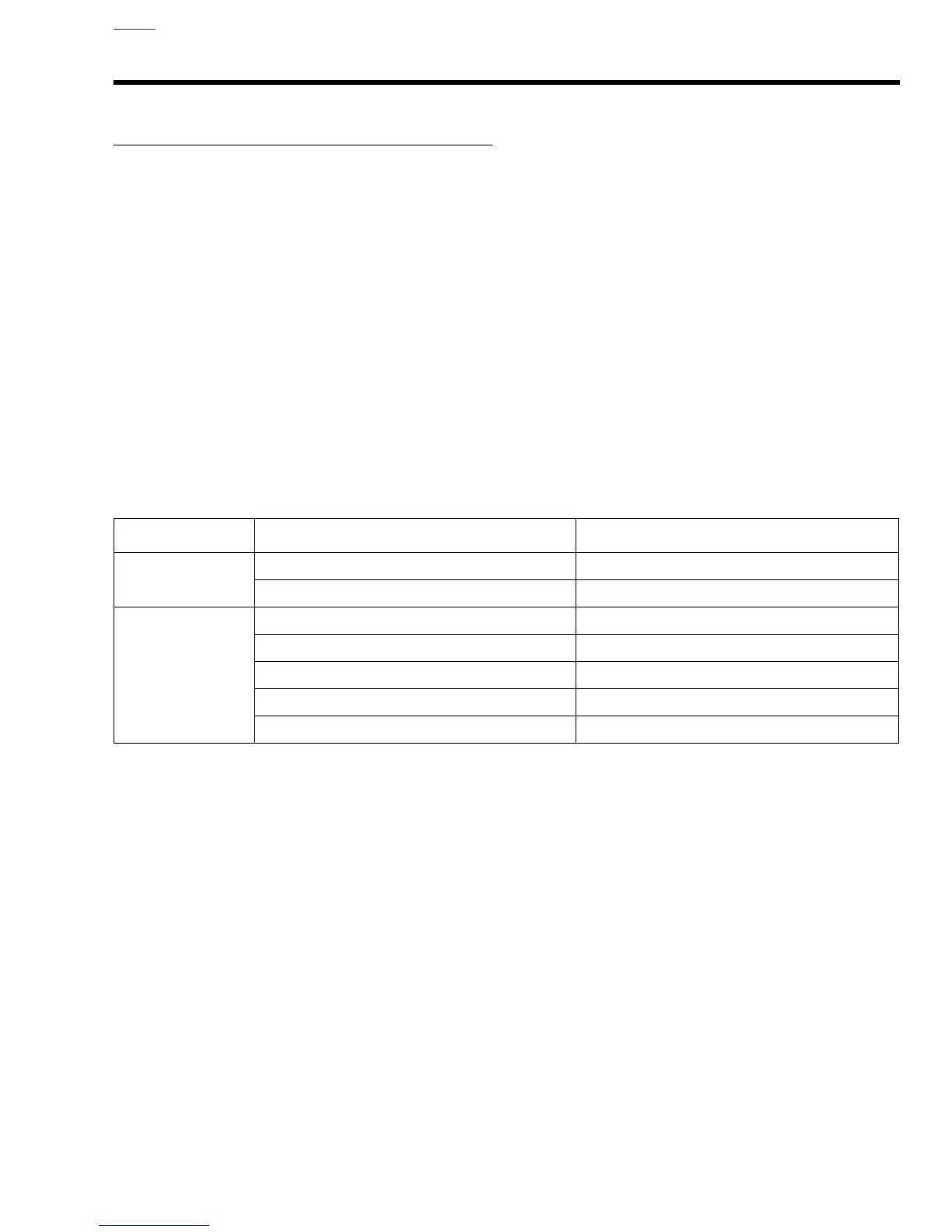